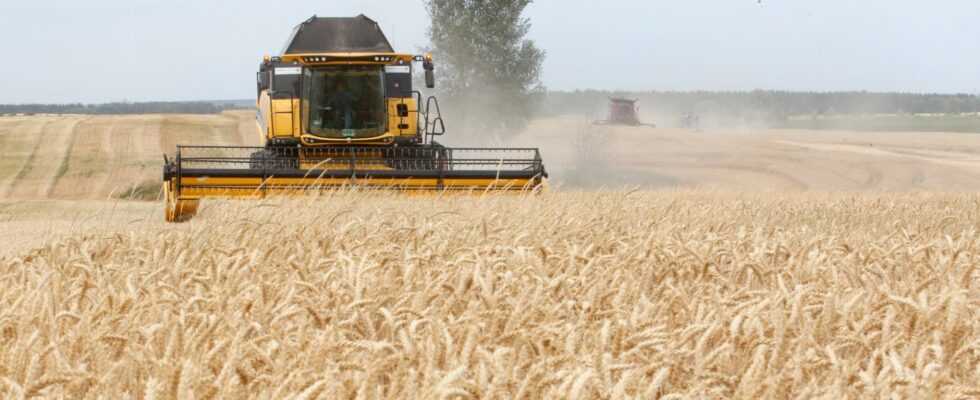The yield of the next wheat harvest in Ukraine is expected to fall by at least 35% compared to 2021 due to the Russian invasion, according to satellite images analyzed by geolocation company Kayrros in a note published on Friday. The conflict has severely disrupted the planting season, which is underway, and forced farmers to work under bombs, with fuel hard to find. At satellite level, the difference from the usual seasons is already visible, corroborating analysts’ predictions.
The images were recorded between April 14 and 22, just under two months after Russia invaded the country, by NASA’s Terra satellite, then analyzed by Kayrros. The specialist in satellite imagery and geolocation applied to the environment relied on the so-called “normalized difference vegetation index” method, a precision infrared analysis that makes it possible to assess the state of plants and thus to predict the production of cereals.
12 million tonnes less wheat compared to 2021
At this point, Ukraine would be able to produce 21 million tonnes of wheat in 2022, 12 million less than in 2021, Kayrros estimates, with a drop in harvest yield of 23% below the average of the last five years. . “As fighting continues and much of the country’s wheat production comes from areas of eastern Ukraine, where the conflict is most intense, actual production figures are likely to be lower. “, analysts warn.
“The sowing campaign is progressing, with farmers who sow with helmets and bulletproof vests (…) but it is an incredible logistical challenge, and we know that the cultivated areas will be smaller” than before, abounded Damien Vercambre, analyst at Inter-Courtage, questioned Wednesday by AFP.
Storage and export issues
Farmers who manage to sow will in any case face a storage problem, as exports by rail and road can only compensate for a minimal part of the departures of goods by boat. Russia maintains its blockade of Ukrainian ports, both on the Black Sea and on that of Azov, severely hampering trade.
The conflict promises to aggravate the fragilities of countries highly dependent on Russian and Ukrainian grain exports, such as Somalia or the Democratic Republic of Congo in Africa, with Russia and Ukraine accounting for 30% of world trade in this commodity.
